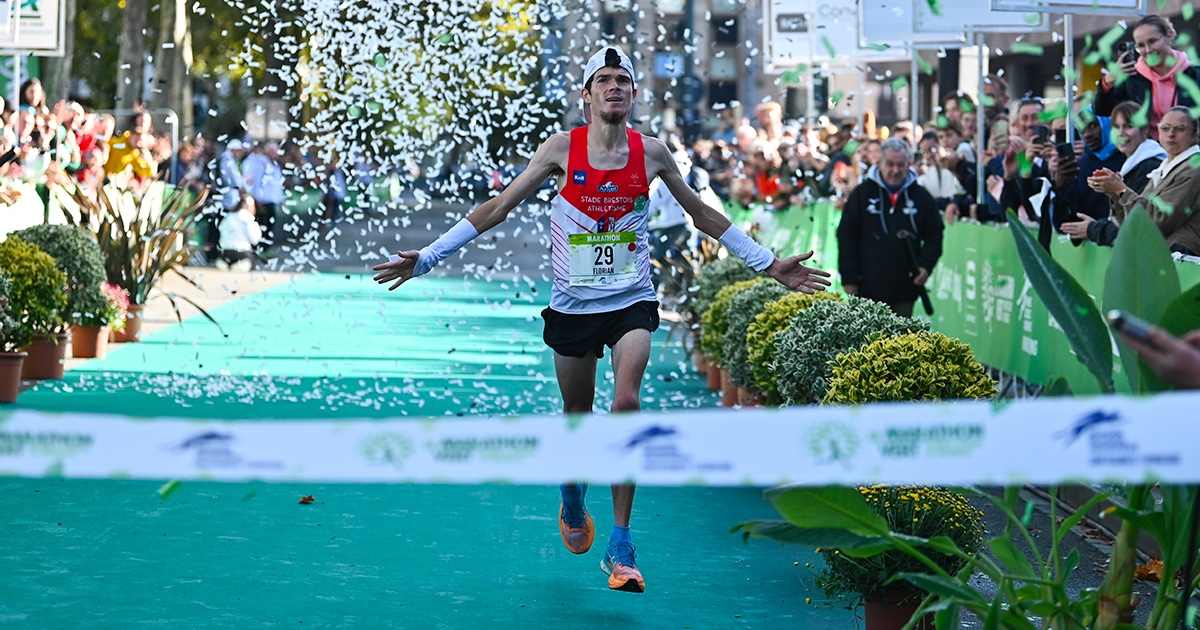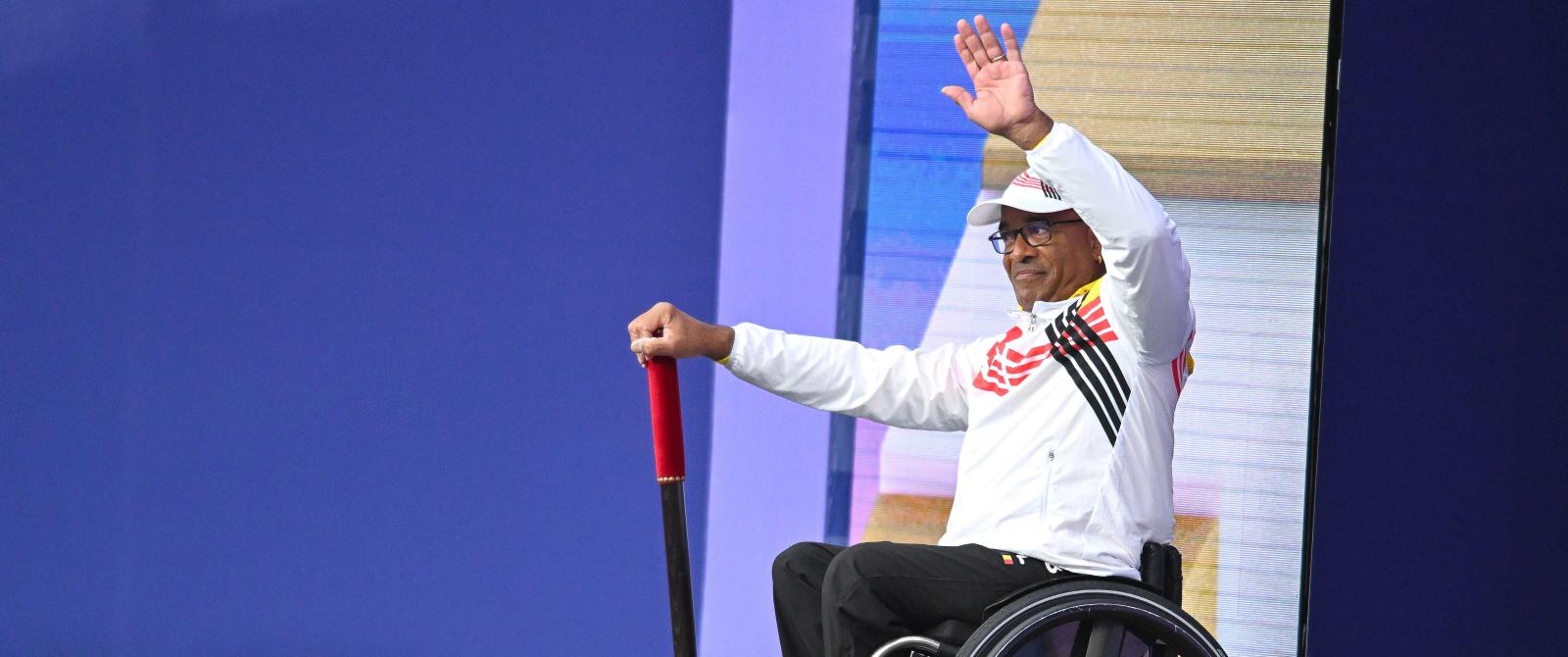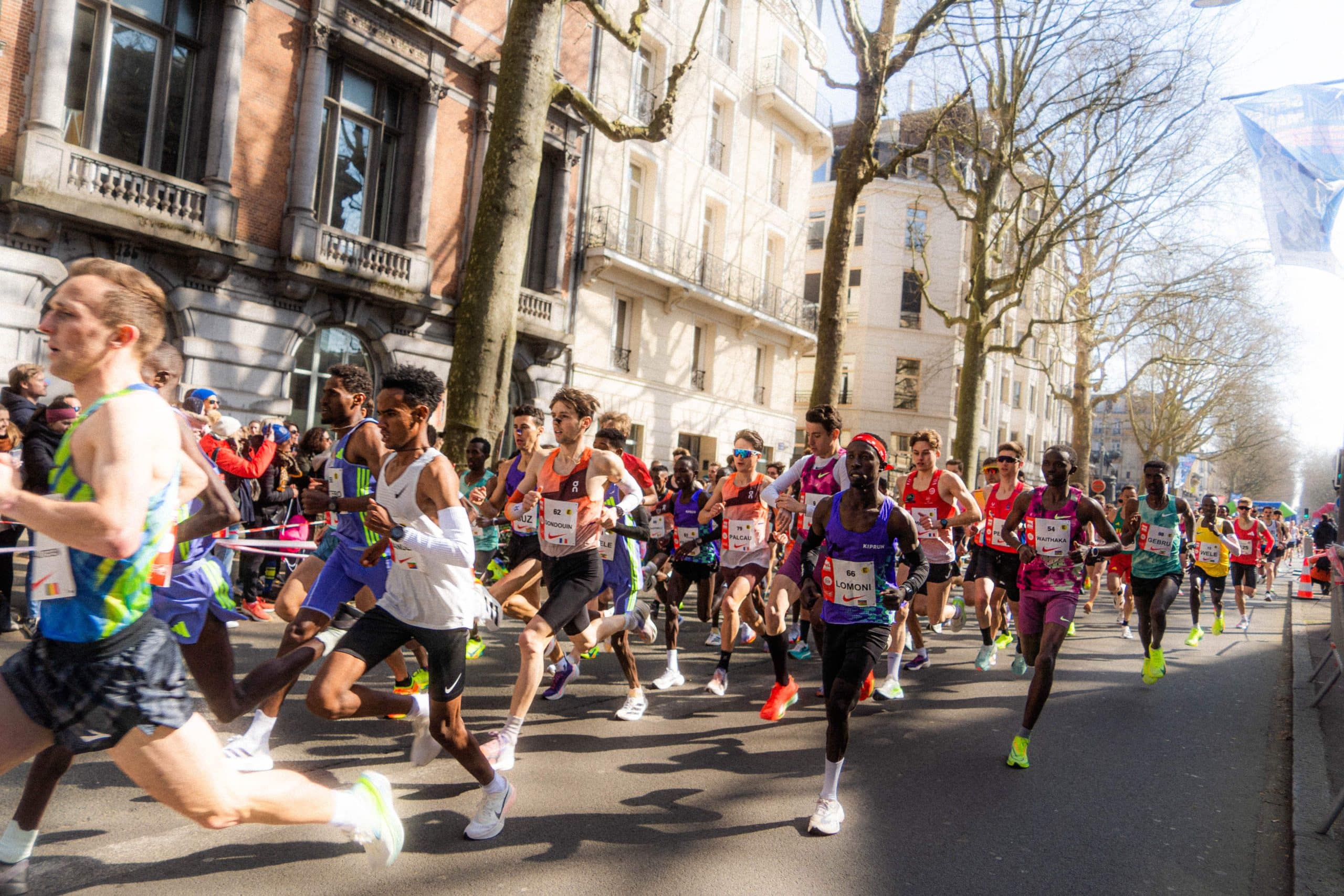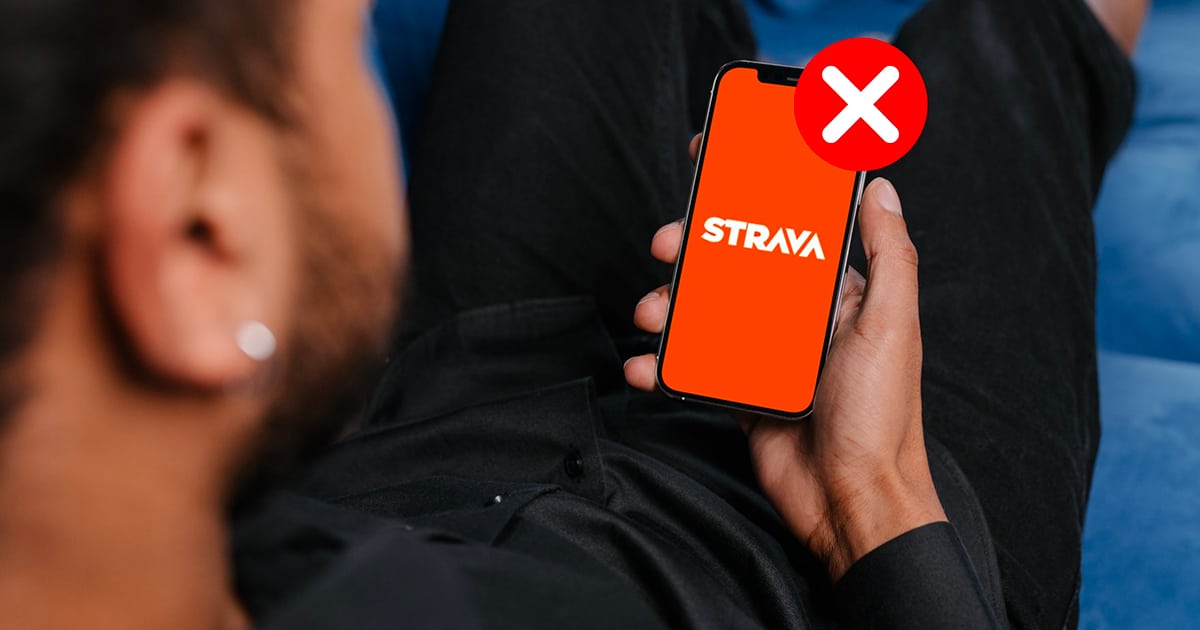The pacers behind successful races and records
In the marathon world, the outstanding performances of top athletes are often made possible by unsung (or almost) heroes: the “pacers.” These pace setters, like Florian Caro, play a crucial role by setting a consistent pace, allowing leading runners to focus on their race and optimize their chances of success… and records.
What if a small animal maintained the pace of a marathon? Not exactly, because in track and field terminology, a “pacer” (called “lièvre” or ‘hare’ in French), or “pace setter” for the more conventional, refers to a runner engaged to maintain a specific tempo during a race, helping athletes achieve ambitious time goals at their level. Their role consists of maintaining a constant speed over a determined portion of the course, often until the half-marathon or beyond, before withdrawing. On their backs, the indication “PACE” among our British friends allows them to be distinguished from other participants, and their mission remains relatively simple
As a reference point for accomplished marathoners, this strategy allows runners to conserve their energy for the critical phases of the race. Today, the world’s biggest marathons enlist the fastest pacers on the circuit. While the first place is not trivial, it loses some of its appeal when a record (of the event or the world) is not broken.
| “You cover a distance without pushing too hard, and that’s enjoyable”
They have become essential. And many have dedicated themselves to helping others for a day. Florian Caro was one of them. “The pacer is the best at setting a pace for the leading group aiming for a specific time,” notes the Breton. “They set a pace to chase records.” The 31-year-old marathoner has served as a pacer twice, including once when he managed to finish, setting a Brittany record, despite expecting to ease up at the 25th kilometer. “I was a pacer at the Rennes Marathon where I won with strong legs, so at the 25 km mark, I couldn’t stop there,” he says. “I also paced the Women’s Marathon in La Rochelle. The winner was delighted to break her personal record and didn’t forget to thank me.” A good pacer runs not for themselves but for others. Their pace must be precise, steady, like a human clock guiding runners to their goal. “I adapt to the organizers’ pace demands,” explains the man who finished 3rd and was the first Frenchman at the Champs-Élysées 10 km race last February 2nd.
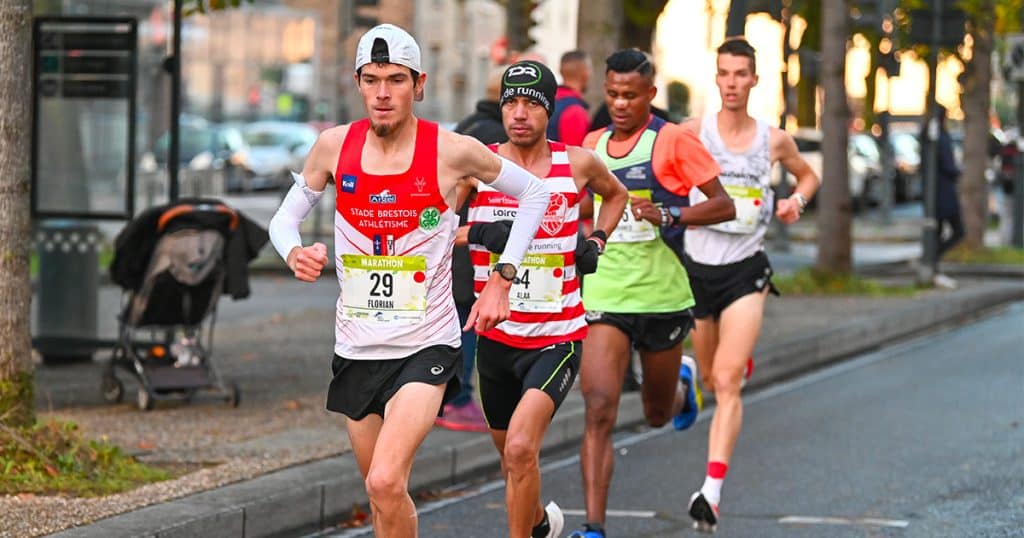
But their role doesn’t end there. “During the race, I point out refreshments. Sometimes, I even offer mine if they need it more than I do. I support them in any way I can.” A good pacer is akin to a travel companion, a mobile assistant, ready to sacrifice their own comfort to help others endure to the end. And the best part? They enjoy it. “You cover a distance without pushing too hard, and that’s enjoyable.” Being a pacer also offers the chance to experience a race differently, feeling its intensity without necessarily enduring all the pain. “It’s a role I really enjoy, so whenever I get offers, I’m always interested.” Florian doesn’t hide his enthusiasm: being a pacer is almost a calling. He loves this role, loves being sought after to prepare for other more important races. Win-win?
| In the Shadow of Champions
Despite their importance in the performance of champions, pacers often remain in the shadows of the race. “Pacers could perhaps be given more recognition because they are an important part of the performance.” Ultimately, they are not listed in the rankings, their role is not mentioned in the results. “Pacers aren’t listed in the rankings; they’re not mentioned at the end.” Their work is essential but invisible, a key cog in a machine that highlights only the winners.
“Don’t bet your whole race on the pacer; they might completely fall apart on the way”
Florian Caro, Brittany marathon record holder (France)
Be careful, relying on a pacer is good, but putting all your faith in them is risky. Florian reminds us: “Don’t bet your whole race on the pacer; they might completely fall apart on the way…” Because a pacer is still a runner, with their limits. And sometimes, things don’t go as planned: “Some make mistakes and aren’t accustomed, and the runner should also focus on themselves.” The goal is to find the right balance: follow the pacer but keep your running instincts active. In short, be that guide, that marker, that support… but not an autopilot. A crucial but discreet role, demanding yet rewarding, that perhaps deserves a bit more recognition. Florian hopes so with all his heart.
| A Historical and Strategic Practice
To explain this phenomenon, we must go back a few decades. The use of “pacemakers” became widespread in the 1980s, alongside the professionalization of athletics. Race organizers and athletes themselves enlist these runners to create favorable conditions for setting new records. For instance, at the La Rochelle Marathon, pacers are tasked with specific split times, such as 15 minutes and 10 seconds for the first 5 kilometers, to guide competitors to optimal performance.
Each marathon organization sets its own split times that vary depending on top marathoners’ goals… but not only. Everyone has their goal, everyone has their pacer. In some races, multiple pacemakers are available for different requested paces. You don’t need to run like Kipchoge to follow this cousin of the hare.
| Multiple Benefits for Athletes
- The presence of pacers provides several advantages for marathon runners:
- Consistent pace: Pacers ensure a steady pace, avoiding speed fluctuations that can prematurely exhaust athletes.
- Shelter from the elements: By positioning themselves in front, they protect runners from the wind, thereby reducing aerodynamic resistance. The drafting benefits conferred by a pacer benefit marathon runners.
- Mental support: Following a pacer allows athletes to concentrate on their race without constantly worrying about the clock.
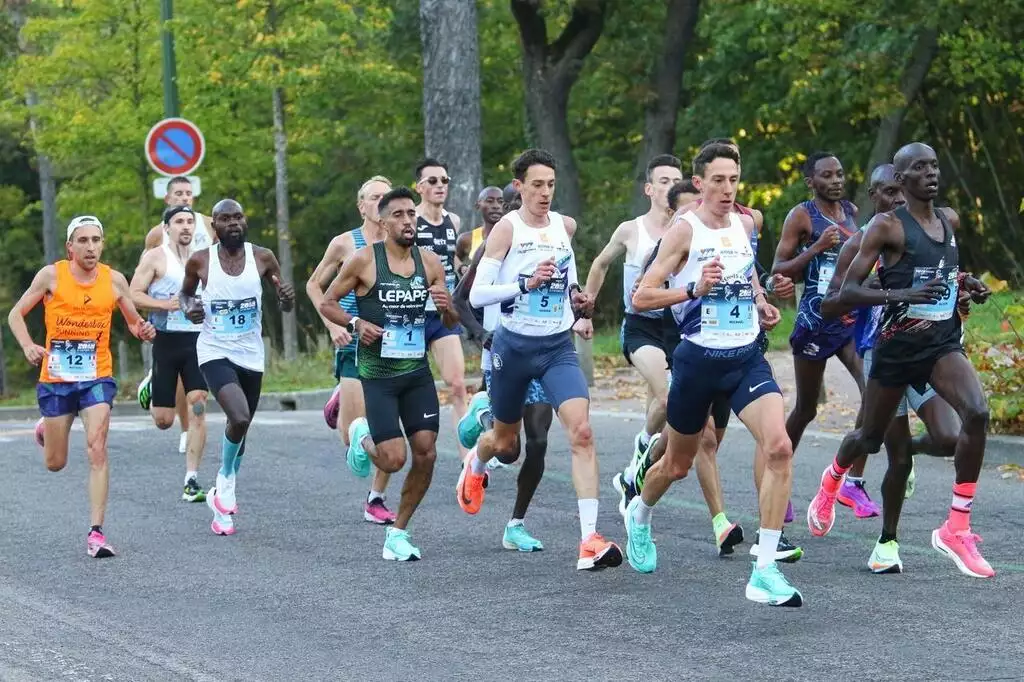
| Productive Collaborations
Like Florian Caro, some pacers, due to their endurance and experience, sometimes choose to finish the race after completing their initial task. This was the case when Ethiopian Mohamed Temam won the Beirut Marathon in 2010, initially serving as a pacer for fellow countryman Aberre Chane, who faltered near the end. More uniquely, Michaël Gras took on the Route du Louvre Marathon on May 14 as a pace-setter and unexpectedly set a personal record (2h 09’58’’) in Lens. Not turning off at the 25 km mark made him the 15th best French performer in history. It was worth it.
| Compensation Commensurate with the Stakes
The contribution of pacers is acknowledged and compensated accordingly. A pacer generally costs between 1,000 and 7,000 euros for major marathons (the “Majors”). In Rennes, for example, Florian Caro received 300 € for leading the women marathoners in La Rochelle last year. This often accounts for about 3% of the “athletes” budget of a Meeting or Marathon. Their presence, often crucial for record-setting, earns them substantial bonuses, reflecting the significance of their role in the success of competitions.
Indispensable players in modern marathons, the expertise and dedication of these pacers allow champions to push the limits of human endurance, etching new records in the history of athletics. To infinity and beyond.
